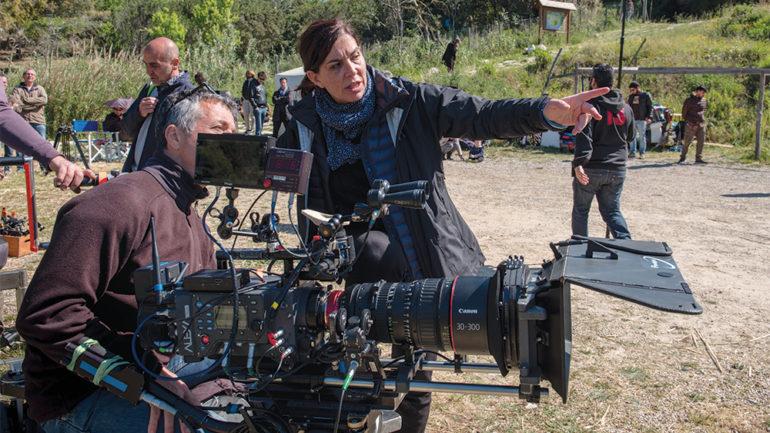‘My Brilliant Friend,’ ‘Gomorrah’ Show Different Sides of Naples
By Nick Vivarelli
LOS ANGELES (Variety.com) – When Saverio Costanzo, the director of HBO and RAI’s “My Brilliant Friend,” started to plan how he would depict the grand but gritty city of Naples — one that’s so vivid in the imaginations of millions of Elena Ferrante readers, he quickly decided that the working-class neighborhood at the core of her four Neapolitan novels had to be fictional.
“Our starting point was always the fake city,” he says, noting that precisely because no other city in Italy has such a strong identity, keeping the right distance from was what enabled him to represent it so intensely.
The drab ’hood called Rione Luzzatti was reconstructed on the grounds of an abandoned glass factory in Caserta, about 20 miles north of Naples, a roughly 5-acre converted space that’s become among the largest sets in Europe. Production designer Giancarlo Basili and local craftsmen built many of the story’s most memorable sites on that lot: the dark tunnel under which the two girls, Lila and Lenù, escape when they skip school; the grate into which the two brilliant friends throw their rag dolls; the Carracci grocery and Bar Solara. This sprawling site comprises exteriors of 14 buildings and a church, a piazza, and period-perfect 1950s apartment interiors, replete with working windows and internal staircases, assembled on a soundstage that was once a warehouse.
“I used roughly 25 different shades of gray,” says Basili on set, adding that in terms of tone, he drew inspiration from Picasso’s “Guernica.” “Colors will come when the girls leave the neighborhood,” the production designer notes. This will happen in Season 2, which starts shooting in March. For the first season, Costanzo and Basili sought to create a “sense of isolation, as though it were the dusty scenery of a Western.”
The other key element of “,” over which the helmer and production companies Wildside and Fandango obsessed, was the cast. Costanzo and casting directors Laura Muccino and Sara Casani saw 9,000 children before picking the four leads: Elisa del Genio, 11, who plays Elena (Lenù); Ludovica Nasti, 12, who plays Lila; and Margherita Mazzucco, 16, and Gaia Girace, 15, who play the friends when they get older. The quartet had little or no acting experience, so the process involved an intensive acting workshop where they also learned, or honed, the specific Neapolitan dialect spoken on-screen.
A more contemporary form of Neapolitan dialect is spoken in “Gomorrah,” the hyper-realistic mob show, now in its fourth season, which in 2014 started taking Italian TV to new international heights. Produced by Italy’s Cattleya and Sky Italia — and aired in the U.S. on Sundance TV and Netflix — “” was conceived as a series that would bring audiences inside the belly of the real Neapolitan criminal underworld, says executive producer Gina Gardini. This dictated the decision to shoot “almost entirely in the actual places it portrays,” adds Gardini, who notes that some of “Gomorrah’s” 50-minute episodes take place in more than 35 locations, which can mean moving the shoot “twice or even three times a day.”
As its narrative evolved, “Gomorrah” has never strayed from the basic tenet of authenticity, says Francesca Comencini, showrunner for the fourth season, which will air on Sky in March. “The principles of realism, accuracy, knowledge and our aversion toward folklore or cliché remain unchanged, as does our fascination with a city that is so unique and powerful,” she adds.
Campania Film Commission chief Maurizio Gemma says that the authentic locations of “Gomorrah” have made the show more complex from a production standpoint than “My Brilliant Friend.” More significantly, he notes that both shows are giving the region surrounding Naples a big boost. His commission is now training more English-speaking crew and working on new incentives and infrastructure to compete with Eastern Europe.

